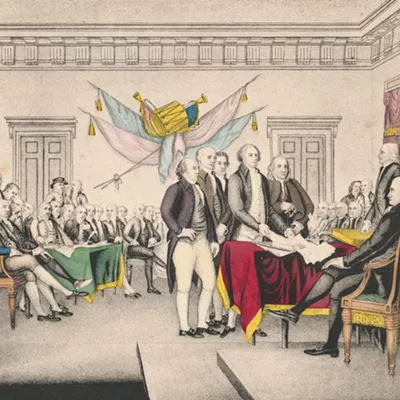One of the very angry board members, John Downes, has broken ranks; i.e., he isn't doing things the "Spokane way" by ignoring the obvious in the interest of going along to get along. Downes, a five-year member of the CDBG Board who has served as both chair and vice chair, has much to say about the precipitous decision, none of it complimentary. For starters, he can't get straight answers to the most obvious question: Why would you fire a senior administrator who has the support of his board? Downes, in an e-mail to me, writes:
"When the mayor fired the Director of the Community Development department on April 20, 2007, the mayor's cited reason... was that Michael Adolfae did not share the mayor's vision. Shortly after firing the Director, the word from the mayor was that his Ad Hoc Committee was being put together to determine the 'vision,' but simple logic deduced that if that were so, then Michael Adolfae was fired for not sharing a 'vision' that did not yet exist." (emphasis added)
Downes says city leaders have been seeking ways divert CDBG money away from the modest, yet effective, programs that greatly improved the lifestyle, ambience, and even public safety of our many low-income neighborhoods. One idea, Downes says, was to direct all the funds for a given year to one neighborhood, perhaps to one mega-project in that neighborhood. In general, he believes the city will direct funds toward sweeping and narrowly directed community development projects.
Adolfae, says Downes, argued to the contrary, saying such projects never produced the intended results and always alienated neighborhoods. And since there are 13 recognized neighborhoods, they would potentially have to wait quite a while for their turn at the money.
Whatever one's "vision" regarding the CDBG program, it seems obvious that Hession and his COO John Pilcher bypassed the traditional decision-making process in favor of their own top-down agenda. Downes laments this development. He observes that through the old bottom-up decision-making process, any number of otherwise marginalized citizens have been brought into civic life.
The final irony, says Downes, was that the week following Adolfae's unceremonious departure, the Spokane CDBG program won a national award for the best neighborhood "bottom-up" program of the year for what it was doing in Spokane's East Central neighborhood.
So what's happening here? So far, Adolfae isn't talking, and Hession must be held to the reason he first gave for firing Adolfae -- differences over "vision." All the while, the CDBG community continues to stew. This seems to be an issue that isn't going away.
Adolfae was always a steadfast supporter of the CDBG citizen-driven decision-making process, and he was devoted to the CDBG mission. From the outset of the River Park Square planning, he was vocal over his concern about the HUD loan, which the City Council secured with CDBG allocation. He pointed out the risk again and again: If the city didn't make loan payments, the federal government would simply reduce Spokane's CDBG distribution. He would often make his bosses uncomfortable by ticking off the days until the draw-down, while noting the exact amount of the loss.
Of course, we realize in retrospect that Adolfae was right all along. Later, when the RPS legal dust had all settled, Lauri Siddoway, the city's counsel, had to count as a win for the city the Cowles' belated agreement to actually pay off that HUD loan -- which had been based on their "promises" to pay. Adolfae saw all this coming.
Urban history is on Adolfae's side, too, certainly as regards to his views about what the CDBG program can do and what it can't do. It can't alter the political economy, not directly. It can, however, work at the social and infrastructure margins to make crucial differences at the neighborhood level. It can work to make civic life more vital.
& lt;span class= & quot;dropcap & quot; & H & lt;/span & ession and Pilcher would greatly benefit from reading the classic book about what not to do in the name of economic development. I refer to the public policy classic Implementation written by the late Aaron Wildavsky and Jeffrey Pressman. A case study of the federal Economic Development Administration misadventures in Oakland, the lessons learned are instructive and can easily be applied to Spokane's situation today. (After all, our city is always about 40 years behind the times.)
Instead of taking federal dollars and distributing them to many small cities, as was Congress' intent, the EDA poured most of its budget into Oakland capital projects and small-business loans. Several years later, almost all the businesses had gone under and no new permanent jobs had been created. Yes, the Bay Area carpenters and electricians loved the work, but few if any lived in Oakland.
Notably, the one project that did produce intended results was a small community health clinic that had been started prior to the EDA effort. The clinic emerged not as a top-down but rather as a neighborhood initiative and prospered with the influx of a small amount of federal support. Prior engagement at the neighborhood level seems to be the key.
Such was Mike Adolfae's vision and that of his CDBG Board.














